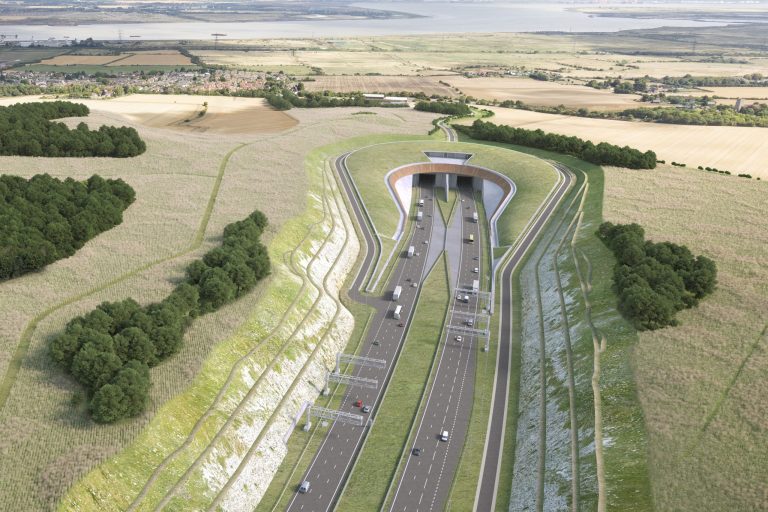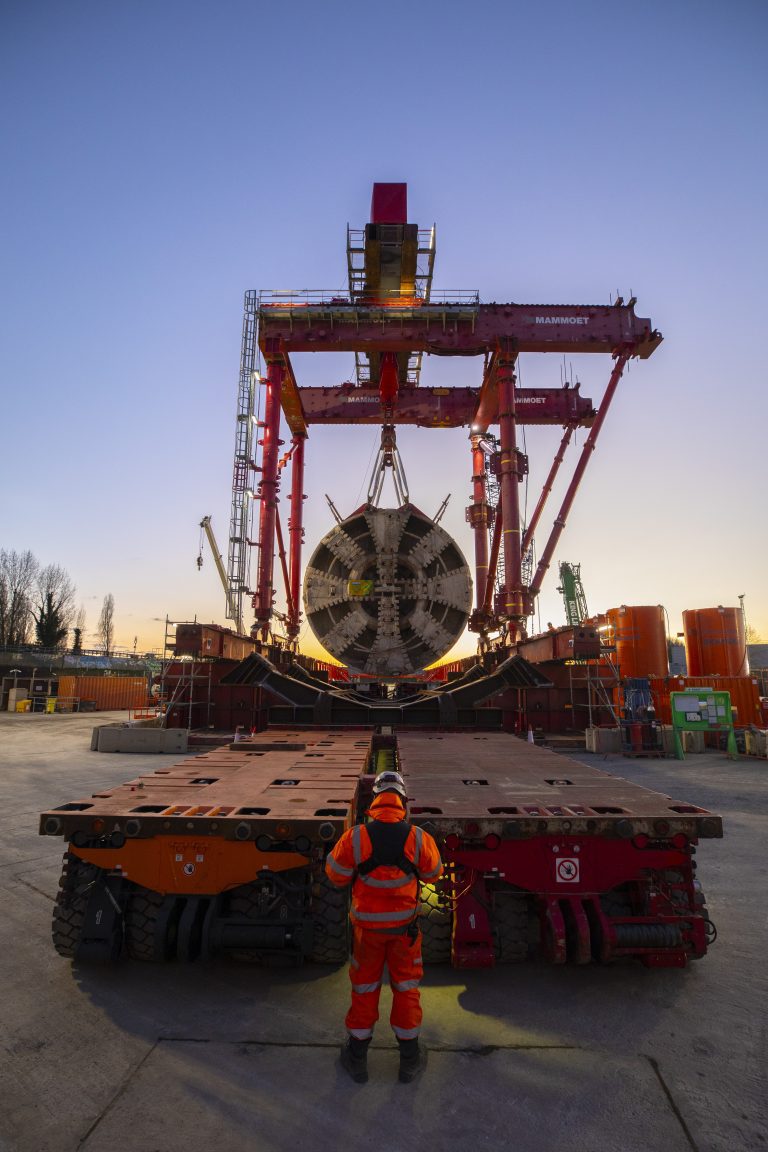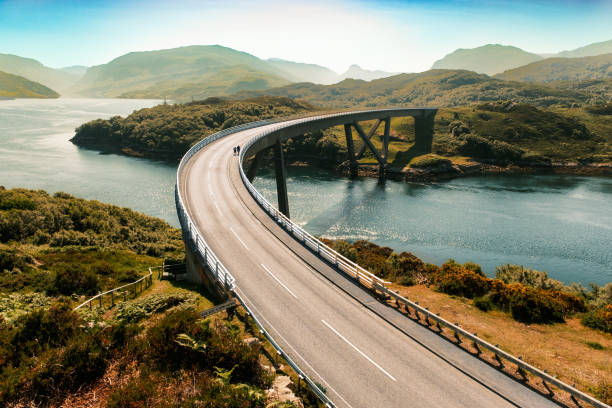Contractors building HS2 have completed work on a pair of innovative extensions to the southern portal of its longest tunnel to eliminate the possibility of ‘sonic boom’ being created by high-speed trains entering at 200mph. The structures, built at the southern end of the railway’s 10-mile Chiltern Tunnel to the north-west of London, are near identical to those now under construction at its northern portal in Buckinghamshire. All trains entering tunnels anywhere in the world force air forward, creating pulses of energy that roll along the tunnel causing a small release of air pressure into the outside world at the far end. Known scientifically as ‘micro pressure waves’, they are inaudible on conventional railways. But in high-speed rail tunnels, air shoved forward without escape routes can create powerful pressure waves that emerge as an audible ‘thud’ or ‘sonic boom’. In a first for the UK rail network, HS2’s design includes extensions on all eight tunnels where trains enter at speeds above 140mph. However, the length, physical setting and aesthetic of those at each end of the line’s tunnel beneath the Chiltern Hills mark them out as unique even to HS2. HS2 Ltd chief engineer, Mark Howard explains, “The maximum speed of HS2 varies along the route. But where the train is entering a tunnel travelling above 140mph we are building portal extensions to prevent ‘sonic boom’ occurring. Although there are several tunnels on the line where train speed will be higher than in the Chiltern Tunnel, no other combines speeds of 200mph with length of 10 miles. Its these unique physical characteristics that demand unique structures at each end.” First identified in 1974 during train testing on Japan’s then new 187mph ‘Sanyo’ shinkansen line, when people nearby noticed ‘booms’ near tunnel exits, the problem was solved by the invention of perforated portals extending from the tunnel entrance. Later, as train speeds gradually increased and further slight improvements in the control of micro-pressure waves were required, the solution was to radically enhance the train’s aerodynamics rather than retrospectively adding the pressure-dissipating portal extensions to tunnels that had already been built. The famous super-sleek, elongated aerodynamic snouts of Japanese high-speed trains cause the pressure to build up more gradually when the train enters a tunnel. Building on over 40 years of research by the international rail community, the engineering team from HS2 Ltd, engineering consultancy Arup together with the University of Birmingham and Dundee Tunnel Research, developed and laboratory-tested HS2’s tunnel portal design. To mitigate against ‘sonic boom’ HS2’s tunnel beneath the Chiltern Hills requires bespoke portal extensions. Protruding up to 220 metres – around the length of two full-size football pitches – from a chalky cutting near the M25 motorway, they are each punctuated along one side with ventilation portholes. These enable some air pushed forward by the train to escape, making the pressure increase more gradual so that the micro-pressure wave emitted from the other end of the tunnel is undetectable. The basic design can be adapted to different lengths: the longer the extension, the weaker the micro pressure wave. In order to decide how long each extension needed to be for every HS2 tunnel, the team used micro-pressure wave measurements from Britain’s first high speed line between London and the Channel Tunnel, HS1 as the benchmark. The line’s tunnels do not experience sonic boom because the micro pressure waves are too weak. Therefore HS2’s research team used it as the basis to develop anti-sonic boom porous tunnel extensions for the new London-West Midlands high speed line. Mark added, “HS2 was designed from the ground up as an entirely new and complete rail system. This enabled us to develop all its constituent parts e.g. trains, tunnels, stations, power systems to complement each other and operate as intended. “In the case of avoiding sonic boom at tunnel portals, we used already-established key criteria including train speed, tunnel diameter and length to develop tunnel portal extensions that would prevent sonic boom occurring.” Commenting, Arup Fellow Richard Sturt said, “Arup is proud to have helped create a new international benchmark for the suppression of sonic booms with the HS2 tunnel portals. They are longer than any existing portals anywhere else in the world as we have prioritized seating capacity on the train, avoiding the need for a long nose section on the train like the Japanese shinkansen. The portals’ unique tapered design combined with the precision-sized holes provide an incredibly smooth build-up of pressure as the train enters the tunnel. As a result, there won’t be any audible noises from micro pressure waves, despite the extremely high train speeds.” Construction of the Chilterns Tunnel, and its portal extensions was led by HS2’s main works contractor Align JV – that includes Bouygues Travaux Publics, Sir Robert McAlpine and Volker Fitzpatrick. The group finished building those at the southern end in January 2025, with the northern pair following in the autumn of this year. Once operational passenger trains will travel through HS2’s 10-mile Chiltern Tunnel in three minutes Building, Design & Construction Magazine | The Choice of Industry Professionals














